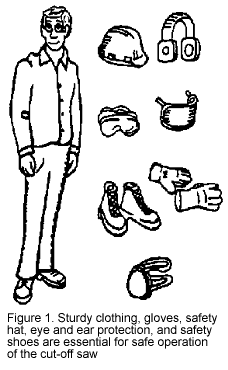BEFORE
OPERATING THE SAW

OPERATING THE SAW
AFTER USING THE SAW
Publication #: 8831-C
This document is apart of a series from the Cooperative Extension, of the University of Arizona College of Agriculture, Tucson, AZ 85719. Publication date: May 1989.
Lance Fluegel, Safety Coordinator, and Bradley Rein, Engineering Specialist, the University of Arizona College of Agriculture, Tuscon, AZ 85719.
Disclaimer and Reproduction Information: Information in NASD does not represent NIOSH policy. Information included in NASD appears by permission of the author and/or copyright holder. More